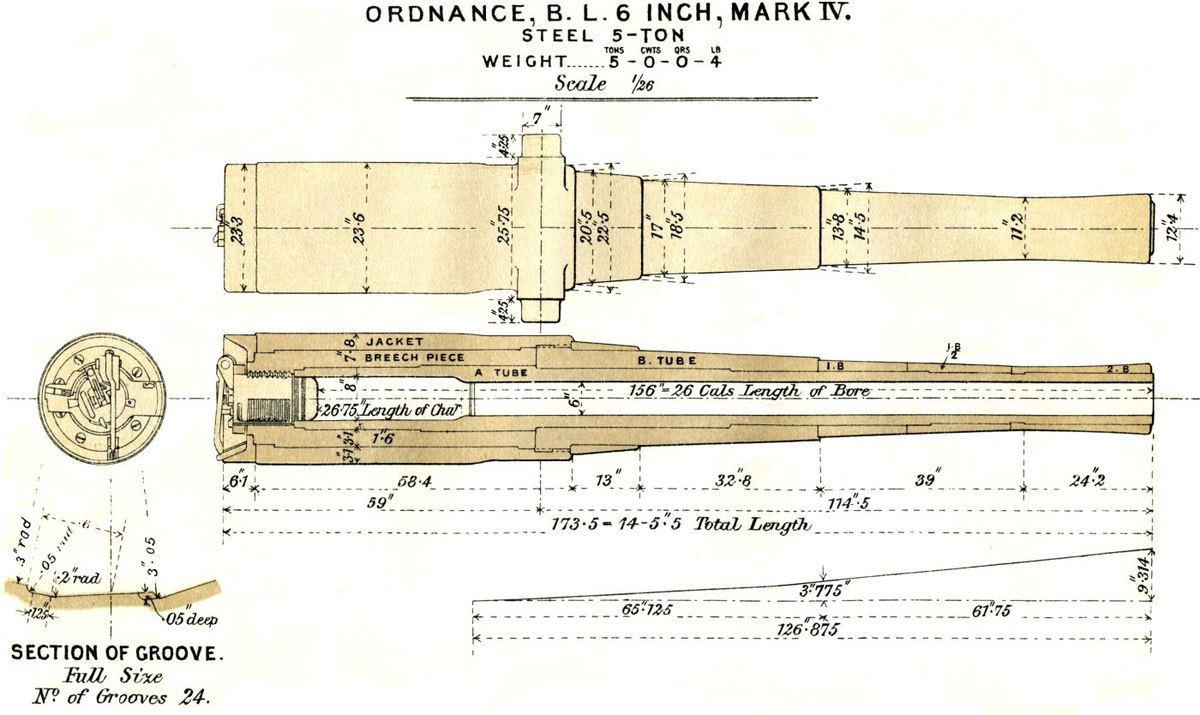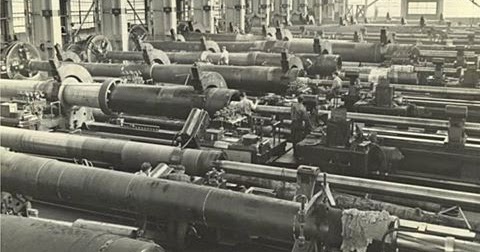Changed thread title and moved to military history subforum (hopefully gathers more view and participation).
========================================================
This Ministry of Information documentary was made to be "a comprehensive picture of life on board for the 1500-strong complement" of the battleship HMS King George V. Released in October 1942, it takes viewers on a tour of the warship's various departments - including the engine room, administration, post office, command bridge and specialist workshops. It shows the workings of a 14in turret and the ship's Walrus amphibian aircraft and catapult. Daily life includes issuing of the rum ration, the mess and wardroom, recreational activities, and the slinging of hammocks.
A few of us elsewhere few weeks ago got discussing the topic more deeply and broadly and the lessons learned.
Didn't have time till now to post a few points of interest to me here and see what you all might have to say and share.
A) Both KGV and PoWales seemed to be having turret issues (evident in parts of this documentary even though KGV was in service for 7mths already)
B) This was a legacy of the interwar naval treaties and Jutland. The original design was for 3 triple 15" turrets, then for 4 quadruple 14", then finally they had to change B turret to a twin to save top weight. These changes meant problems developed with the ammunition handling interlocks, which after the self-inflicted battlecruiser losses at Jutland was something the RN was not going to accept work-arounds on.
C) Beatty role in Jutland was lot worse than is often let on. i.e It wasn't just storing propellant charges outside the magazine (which by itself wouldn't have been enough to cause a magazine explosion, just the loss of a turret), but also the deliberate disabling of anti-flash precautions in order to facilitate rapid fire, which caused flash-back from the turret to the magazine. The reasoning for it was even more damning: the Battlecruiser Squadron couldn't shoot straight because they didn't have enough time for shooting practice, so Beatty decided to emphasise rate of fire in the hope that if he threw enough shells at the enemy some might hit.
D) It's notable that the gunnery of 5th Battle Squadron (BARHAM, VALIANT, WARSPITE & MALAYA) was far more effective than the rest of the Battlecruiser Squadron it was attached to - and despite being far more heavily hit (WARSPITE suffered 15 main gun hits when the squadron was engaged by the whole of the High Seas Fleet) they all made it home again. They were normally part of the Grand Fleet at Scapa, so actually did gunnery practice and followed the correct ammunition handling procedures.
E) It's also notable that Beatty completely failed at his principal job at Jutland: provide Jellicoe with accurate and timely information about the position of the enemy capital ships. He did lead the High Seas Fleet onto the guns of the Grand Fleet, but that was more by luck than judgement - he was running north without an accurate position for the Grand Fleet, and Jellicoe guessed correctly. Replace Beatty with someone competent and Jutland becomes a very different battle.
F) Drachinifel 3 part jutland series is very good watch to get a battle analysis reference with details:
G) Hood’s 3rd Battlecruiser Squadron had dramatically improved their shooting during their brief stint on gunnery practice, but were not materially better at reporting in to the fleet commander. This despite Jellicoe explicitly sending them out to find Beatty and the Germans. Nor were the light cruiser squadrons very good at reporting in, despite scouting being their job.
The destroyers and armored cruisers similarly failed to keep Jellicoe informed that night, and many COs assumed the division and squadron officers could see the exact same things they could see. Jellicoe had no idea there was a fight going on in his screen, despite sort of expecting one (that’s why the screen was so heavy astern).
As a result, instead of the Grand Fleet being between Scheer and home at early morning hours on June 1 (as Jellicoe planned), the Germans got away relatively unscathed. Whether Jellicoe could have repositioned the Grand Fleet to cut the Germans off is a good question, but there’s very little doubt if Jellicoe can do so most German battleships are going to be bottom, given how devastated the KONIGs (and to a lesser extent the KAISERs) were, how Jellicoe’s combat power was virtually unimpaired, and the German gunnery systems degraded by the exhaustion of their crews.
H) Quite frankly, most RN officers at the battle were extremely negligent in keeping their superiors informed, and Jellicoe had a much less complete picture than he should have had, even accounting for the chaos of battle. Yes, his guesses/intuitions/deductions emphasize how good he was and how well Fisher chose him, but it’s still a massive failure that cost the Royal Navy a huge victory.
This failure ultimately lies at Jellicoe’s feet for not sufficiently emphasizing proper communication and reporting and granting individual captains the responsibility and expectation they would report in - whether or not they thought someone else saw things. That error was rectified after the battle, but far better for the RN had it been before.
@Anmdt @Gary et al.






wwiiafterwwii.wordpress.com
